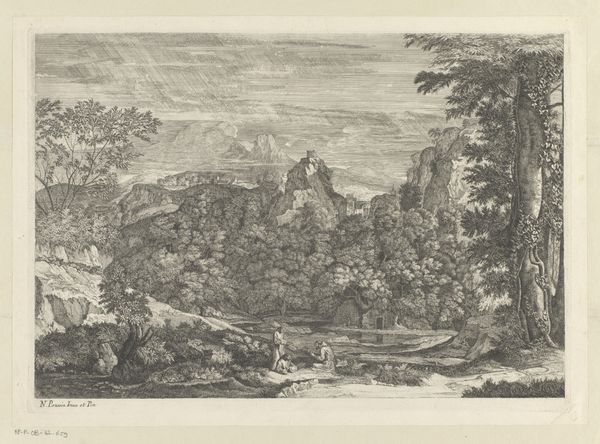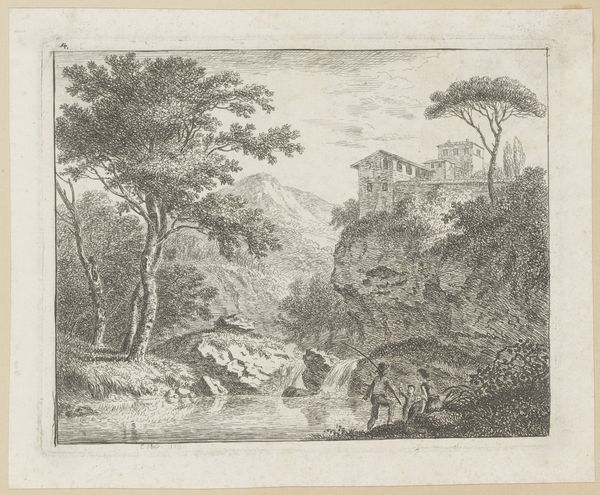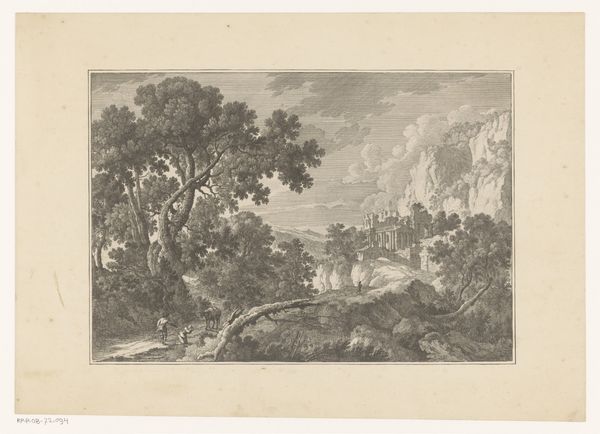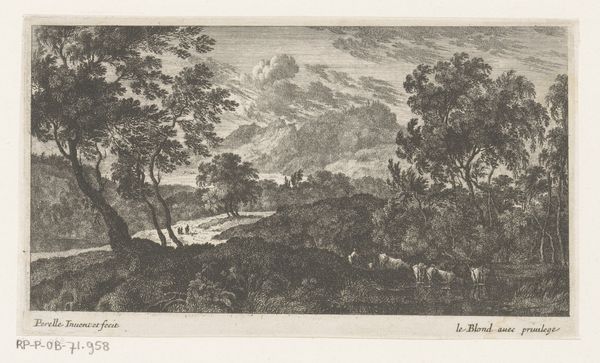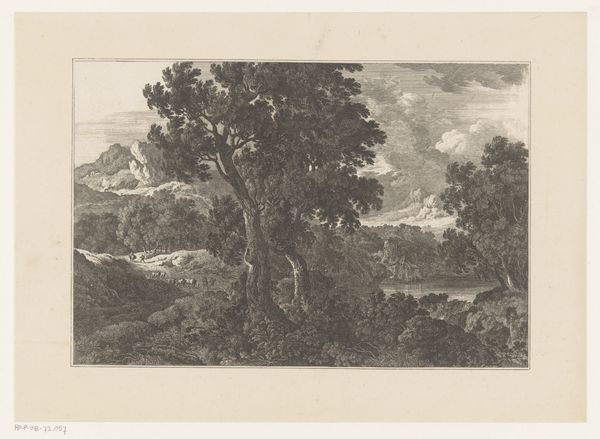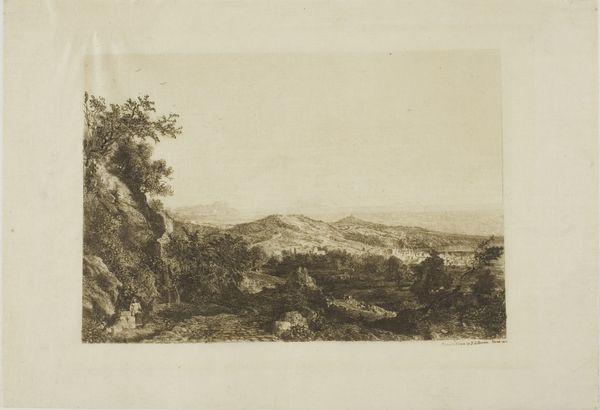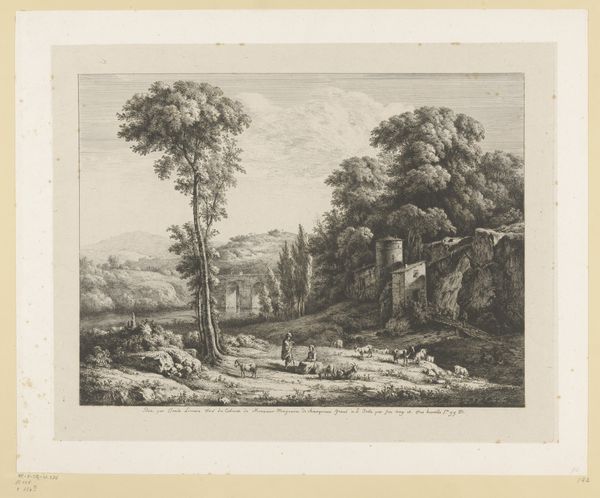
Ruins of a Castle on a Steep Hill (Die Burgruine auf dem schroffen Felsen) 1818
0:00
0:00
print, etching
# print
#
etching
#
landscape
#
etching
#
romanticism
#
cityscape
#
history-painting
Dimensions: 6 7/16 × 8 9/16 in. (16.35 × 21.75 cm) (plate)7 × 8 15/16 in. (17.78 × 22.7 cm) (sheet)
Copyright: Public Domain
Curator: Johann Christoph Erhard created "Ruins of a Castle on a Steep Hill," in 1818. This print, an etching, is now housed at the Minneapolis Institute of Art. Editor: It feels immediately forlorn, almost spectral. The tonality is strikingly uniform, and the detail makes it feel incredibly vast and miniscule simultaneously. Curator: Notice how Erhard orchestrates tonal value to define depth and volume. The precision of the etched lines—especially in the foliage—creates a tangible texture. Observe, too, how the ruin itself punctuates the composition; it acts almost as a full stop at the culmination of the rising slope. Editor: Yes, but what is that ruin saying to us? For centuries, ruined castles have served as memento mori, potent symbols of faded glory and the inevitable passage of time. Erhard's choice to emphasize the ruin suggests a deeper meditation on mortality and history. Curator: The strategic use of line emphasizes a visual dichotomy, almost creating layers. There is that tension between decay and endurance—notice how the etching suggests that contrast so vividly. And I would further underscore Erhard's employment of that fine hatching to achieve a striking visual weight. Editor: Indeed, and let us also recognize the human figures who approach this space. They're not merely elements of scale, are they? The symbolism is fairly dense, and the way Erhard positions them almost suggests a pilgrimage. Their symbolic journey seems inextricably connected to memory and reflection. Curator: A sharp observation. Thinking of the interplay between surface and depth allows us to explore a formal connection to the tradition of landscape etching. I wonder about Erhard's contemporaries who focused on capturing landscape: what would they have said of his choices? Editor: Exactly! It's not simply a rendering of landscape, but rather an active dialogue with the weight of history, cultural memory, and Romantic melancholy. It’s evocative, both visually and psychologically. Curator: Reflecting upon our observations today, what struck me is Erhard's technical proficiency. It really enhances his ability to construct a compelling visual argument with relatively simple, yet meticulous means. Editor: For me, it’s the work’s powerful use of symbols that is thought provoking. This etching lingers in the mind long after one stops looking at it, its meanings rippling outward like the echoes of history.
Comments
minneapolisinstituteofart almost 2 years ago
⋮
Johann Christoph Erhard trained as a draftsman and etcher in his hometown of Nuremberg. In 1816 he moved to Vienna and frequently traveled around the scenic environs of the city with his sketchbook. Ruins of the Castles on a Steep Hill represents the valley of the Brühl in southwest Vienna, where the Prince of Lichtenstein a decade earlier had ornamented the landscape with artificial ruins. In the background we see the Black Tower, a picturesque structure erected atop a rocky crag in 1810. Erhard enlivens the scene with subtle details—the light flickering on the leaves of the trees in the foreground, a man hiking with his dog on a sunlit path, and, not far behind him, a couple stealing a private moment in the shade. In 1819 Erhard moved to Rome, where he continued to work while struggling with deepening depression. He shot himself three years later, dying just shy of his 27th birthday.
Join the conversation
Join millions of artists and users on Artera today and experience the ultimate creative platform.

